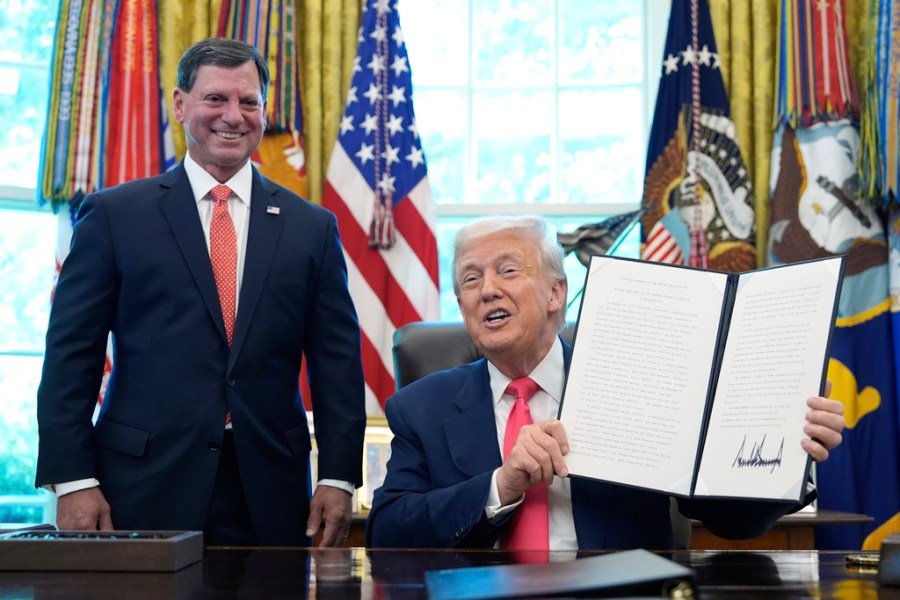
Social Security is broken. The program has run deficits for many years and will continue to do so indefinitely. The so-called “trust fund” is nothing more than IOUs from the federal government and that will be exhausted in late 2032, and the long-term unfunded liabilities are in the tens of trillions of dollars. Politicians who insist Social Security can’t be touched are not protecting seniors. They are pandering, and when the “Trust fund” is exhausted, there will be 24 percent benefit cuts across the board unless something is done to fix the problem.
The system can no longer be seen as the “third rail” and must be fixed for good.
For decades, Washington has tinkered at the edges by raising payroll taxes and raising the retirement age. None of this has solved the fundamental flaw of Social Security, namely, that it is a pay-as-you-go scheme. Current workers are paying for current retirees, and nothing is being accumulated to pay the current workers. With fewer workers supporting more retirees, the math simply doesn’t work anymore.
There is a better way, one that has worked in many countries around the world, private retirement accounts. Instead of sending their payroll taxes into a government system that is broken and getting worse, workers would invest those contributions in their own accounts, managed professionally, compounding in value over time. At retirement, that nest egg would belong to them, not to the government. And when they pass away, the remaining assets would go to their heirs, building generational wealth instead of disappearing into Washington’s black hole.
There are many advantages to privatization. Private accounts are assets owned by the individual, offer higher retirement income, promote economic growth through investment, and eliminate the government’s massive unfunded liability. Workers could contribute more if they chose, employers could match additional savings, and the program would become permanently self-sustaining.
The challenge is transition. Moving from the broken pay-as-you-go system to a fully funded private accounts model requires significant capital. We must maintain payments to the current recipients so redirecting contributions to private accounts leaves a funding gap for current retirees. That shortfall must be covered fairly and responsibly during the transition.
I have outlined a conceptual 20-year transition plan that shows the way forward with a gradual shift to private accounts until all contributions go into private accounts in year twenty. Current retirees would keep their benefits, while new retirees would receive a combination of Social Security payouts and private account disbursements until private accounts fully cover their retirement. The temporary shortfall would be covered by three sources: modestly higher payroll contributions from employees, employers and the government. These would sunset once the trust fund is no longer needed.
Yes, there will be transitional costs and adjustments. But when the conversion is complete, retirees will be better off, unfunded liabilities will be gone, and the program will finally be sustainable.
The numbers show why this is important. A worker who invests the current 12.2 percent Social Security contribution for 40 years, compounding at even a conservative 5 percent, would retire with far greater income than Social Security provides today. Retirement age would become irrelevant, because individuals could draw benefits whenever their savings reach a minimum threshold — for most people that would be earlier than the current retirement age of 67. Unlike Social Security, their accounts would be real assets they own and control.
The bigger picture is sobering. Social Security’s collapse is only one part of America’s looming fiscal crisis. With debt nearly 125 percent of GDP, multitrillion annual deficits forever, and projections showing debt heading toward 200 percent of GDP in the coming decades, we are on a collision course with reality. Social Security is not the whole problem, but it is a critical piece of the solution.
What is missing is public support for a major change like this. Past attempts at privatization have failed not because the economics were unsound, but because the plans were not fully thought through, sold clearly, or supported broadly. Groups like AARP, which claim to speak for seniors, must stop blocking reform and start advocating for solutions that protect future retirees.
The current Social Security program is a financial disaster. Pretending otherwise is a dangerous delusion. We can fix it with a real plan, over time, through private accounts. That path is not easy, but it is fair, sustainable, permanent and better for all parties.
The choice is between clinging to a Ponzi scheme that is collapsing before our eyes or building a retirement system that works for seniors today, for workers tomorrow and for America’s future.
Les Rubin is the founder and president of Main Street Economics.

